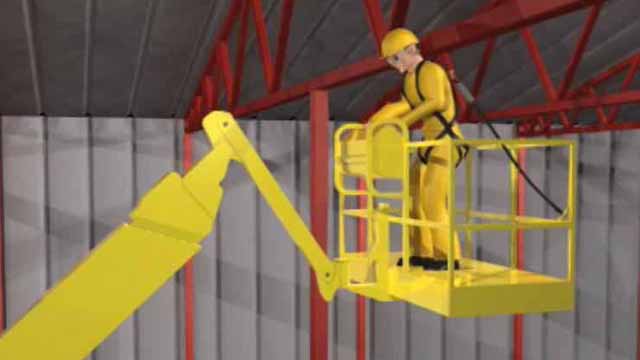
Secondary guarding, not anti-entrapment
IPAF adopting new policy
By International Powered Access Federation
IPAF believes that the term “secondary guarding” should be used in place of “anti-entrapment” devices and is adopting this policy at its rental and manufacturer meetings and in publications. This was one of the items discussed at the first meeting of the re-established MEWP Safety Sub-Group under the Strategic Forum for Construction Plant Safety Group (SFCPSG).
In a written proposal, IPAF technical officer Chris Wraith stated that: “The term ‘anti-entrapment’ devices is, in the vast majority of cases, factually incorrect. Most additional equipment or devices are only activated once a person has become trapped and forced against pressure sensing equipment or devices, which stop further movement of the platform and activate visual and audible alarms to alert others that the operator has become trapped. Furthermore, using the term ‘anti-entrapment’ is thought to encourage complacent behaviour. MEWP operators wrongly believe that an ‘anti-entrapment’ device will prevent any overhead crushing or entrapment. They become reliant on the device and less vigilant of their responsibilities and working environment.”
IPAF emphasises that MEWPs are built to comply with internationally recognised design standards and have primary guarding systems – to protect the operator, fitted as standard on all MEWPs. They are thus safe by design and “secondary guarding” devices is a more appropriate term to describe additional protective measures taken following a job- and site-specific risk assessment.
Industry experts agree that no single solution will prevent overhead crushing incidents from occurring. Prevention requires the combined efforts of operators, site management, rental companies and manufacturers working towards improvements in: operator training, MEWP management on site, clarification of supplier roles and responsibilities, continuing MEWP design initiatives.
A good background document is the SFCPSG Best Practice Guidance for MEWPs: Avoiding Trapping/Crushing Injuries to People in the Platform, available at the Publications section of www.ipaf.org.
About the Author
IPAF is the parent organization of North America's Aerial Work Platform Training (AWPT). Both are not-for-profit member organizations that promote the safe and effective use of powered access equipment. Find more information at www.ipaf.org.


















